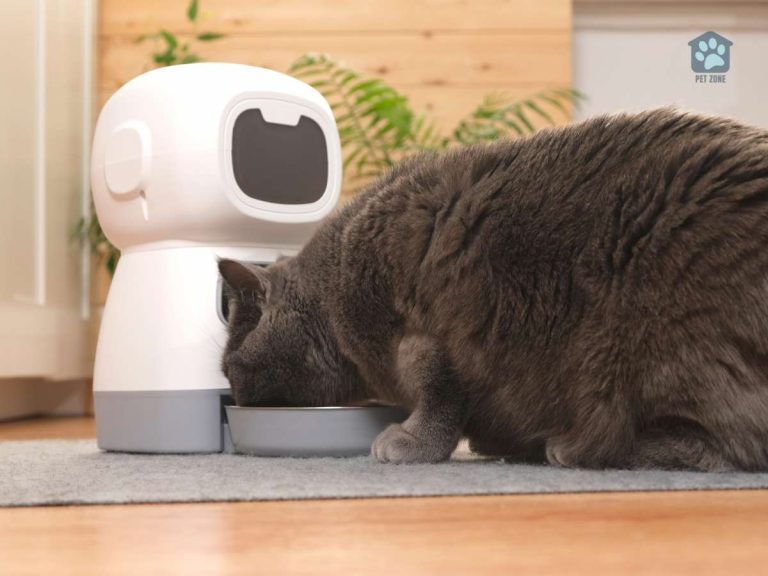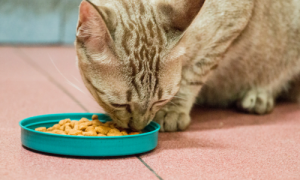Estimated reading time: 6 minutes
As a cat lover, you might have noticed your cat sitting in a peculiar way – with her front paws crossed. It’s a sight that can make any cat owner’s heart melt.
But have you ever wondered why cats cross their front paws? Is it just a comfortable position, or is there more to this adorable behavior?
Key Talking Points
Understanding Cat Body Language
Cats communicate a lot through their body language. When you see your cat sitting with their paws crossed in front, it’s a sign that your cat may be trying to convey something.
A cat’s paws are an essential part of their communication. For instance, when cats knead with their front paws, it often means they are feeling particularly relaxed or content.
Cats often tuck their paws under their body when they want to keep warm. On the other hand, when a cat stretches out with its legs, it might be preparing for an activity or simply enjoying a good stretch. Cats also use their paws to show affection, such as when they gently tap you with a front paw.
When a cat is lying down with its paws tucked, it’s usually a sign that the cat feels relaxed and secure. However, if a cat lifts a paw or places its paws over its face, it might be a sign of discomfort or anxiety. Understanding these subtle cues is essential for cat owners to ensure that their pets feel safe and loved.
Reasons Why Cats Cross Their Front Paws
Cats are known for their grace and poise, and seeing a cat cross its paws can be an endearing sight. But what are the possible reasons behind this behavior?
Comfort and Relaxation
One of the main reasons for a cat to cross their paws in front is to find a comfortable position to sit or lie in. When a cat is relaxed, she might cross her front paws as a way to get comfortable. This is especially true if the cat is sitting on a soft surface where its paws can sink in a little. The crossed paw position can also help cats feel more comfortable and secure.
Observing Their Surroundings
Cats love to observe their surroundings. When her paws are crossed in front, it might be a sign that she wants to remain alert while still being comfortable. With her front legs crossed, she can quickly spring into action if needed.
Imitating Human Behavior
Believe it or not, cats are great imitators. Some cat owners have noticed that their cats cross their paws because they like to mimic human behavior. If you often sit with your arms or legs crossed, don’t be surprised if your cat starts crossing their front paws too!
Breed-Specific Traits
Maine Coon cats are known for crossing their front paws. This breed tends to be more relaxed and may cross their paws as a natural part of their demeanor. However, Maine Coons are not the only ones; many cats from different breeds also cross their paws.
Observing Your Cat’s Behavior
When you see your cat crossing their paws, take a moment to observe the context. Is your cat in a new environment? Is it cold? Is your cat looking at something intently?
Cats usually cross their front paws when relaxed, but they might also do it when they’re focused on something. Sometimes, cats cross their paws and stare at something with curiosity.
It’s also possible that your cat is trying to find a comfortable position to sit in. Cats often tuck their back paws under their bodies and cross their front paws when they’re looking for a comfortable position.

Fostering a Positive Environment for Your Cat
Creating a positive environment for your cat is essential for its well-being. When cats feel safe and secure, they are more likely to engage in natural behaviors like crossing their front paws.
Here are a few tips to create a cat-friendly space:
Conclusion
Seeing your cat cross her paws can be an endearing sight, and it’s often a sign that your cat is relaxed and comfortable. Whether your cat is mimicking you, finding a comfy spot, or just being its adorable self, the reasons behind paw crossing can enhance the bond between you and your feline friend.
So, the next time you see your cat crossing its paws, take a moment to appreciate the trust and comfort your cat is showing you.
Please Comment and Share
We hope you found this article helpful! If you have any thoughts or experiences you’d like to share, please feel free to leave a comment below. We love hearing from our readers.
And if you think this article could help other cat parents, don’t hesitate to share it on your social media platforms. Your shares help us reach more interested pet people. Thanks for your support!








